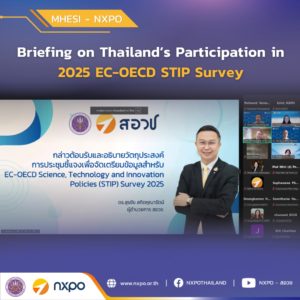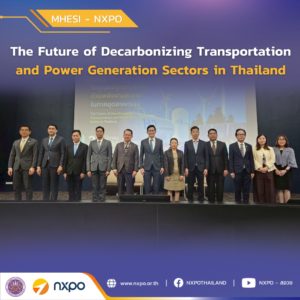NXPO has been conducting system research to design an implementation strategy to drive circular economy. The result of the study can be summarized as follows.
The scope of circular economy goes beyond waste management and must aim at creating monetary and economic values from product and process modification. In Thailand, the lack of waste segregation at source is the major bottleneck of recycling, thus hampering the transition to circular economy. To drive circular economy, two approaches are proposed to be implemented in parallel:
- Applying circular thinking to solve existing problems which are waste generation and poor resource-use efficiency. Although this approach does not create high economic value, it will play a critical role in conserving limited resources and shifting paradigms and behaviors in all sectors, thus building strong foundation for transitioning to new economy.
- Applying circular thinking to create new economy. New businesses will emerge to boost resource-use efficiency, facilitate material recycling and create green jobs and green society.

Changes in policy, infrastructure and public engagement need to take place in order to develop an ecosystem that will enable full transition to circular economy with less burden on the players in the value chain. The right system is needed to support businesses to come up with new products and services, modify manufacturing process, make investment in the modification of production line and develop marketing strategy for new products/services accordingly.
Four factors were identified by the study as obstacles to circular economy. These are 1) the lack of mechanism to build capacity and collaboration for transitioning to circular economy, 2) the lack of clear direction and plan for research and innovation, 3) the lack of model cases to influence policy makers to make changes in laws/regulations and create incentive measures, and 4) fragmented awareness programs in circular economy that do not create powerful momentum in the society. As a result, four anchor programs are proposed to develop an ecosystem for circular economy as illustrated in the following diagram.








